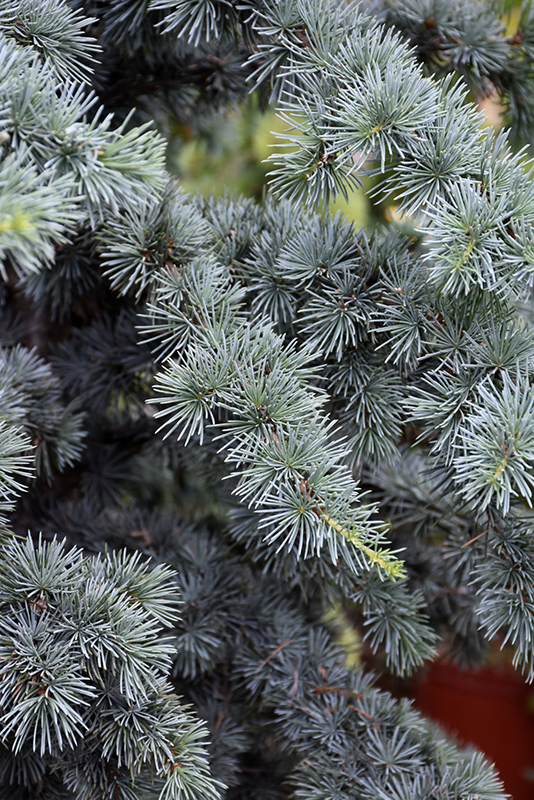Cedar, Columnar Blue Atlas Cedrus atlantica 'Fastigiata' Height: 30 feet Spread: 10 feet
Sunlight:
Hardiness Zone: 5b Other Names: Fastigate Blue Atlas Cedar Brand: Iseli Nursery Description: One of the most valuable landscape trees for its unique beauty, with a narrow, columnar habit and silvery-blue needles; an excellent accent choice for smaller landscapes Ornamental Features Cedar, Columnar Blue Atlas is primarily valued in the landscape for its rigidly columnar form. It has attractive silvery blue evergreen foliage. The needles are highly ornamental and remain silvery blue throughout the winter. However, the fruit can be messy in the landscape and may require occasional clean-up. Landscape Attributes Cedar, Columnar Blue Atlas is an evergreen tree with a strong central leader and a narrowly upright and columnar growth habit. Its average texture blends into the landscape, but can be balanced by one or two finer or coarser trees or shrubs for an effective composition. This is a relatively low maintenance tree, and can be pruned at anytime. Deer don't particularly care for this plant and will usually leave it alone in favor of tastier treats. It has no significant negative characteristics. Cedar, Columnar Blue Atlas is recommended for the following landscape applications; Planting & Growing Cedar, Columnar Blue Atlas will grow to be about 30 feet tall at maturity, with a spread of 10 feet. It has a low canopy with a typical clearance of 1 foot from the ground, and should not be planted underneath power lines. It grows at a medium rate, and under ideal conditions can be expected to live for 80 years or more. This tree should only be grown in full sunlight. It does best in average to evenly moist conditions, but will not tolerate standing water. This plant should be periodically fertilized throughout the active growing season with a specially-formulated acidic fertilizer. It is not particular as to soil type or pH. It is somewhat tolerant of urban pollution. This is a selected variety of a species not originally from North America, and parts of it are known to be toxic to humans and animals, so care should be exercised in planting it around children and pets. Special Attributes These evergreens do shed inside foliage in the autumn or spring. Cedars have male and female reproductive parts on one tree. 1 3/4-2 inch Male flowers are catkins or pollen cones and are on lower branches in autumn. Blue female cones grow upright on higher branches getting 3 3/4 inches, taking 2 years to mature. Evergreens need to be watered during the winter. Our desert climate especially in late winter to early spring evergreens can suffer during next growing season. An easy way to remember check for dryness on the holidays Halloween, Thanksgiving, New Year's Day, Valentines Day & Easter.![]()
![]()
![]()
![]()
![]()
![]()
![]()
![]()
![]()
![]()

